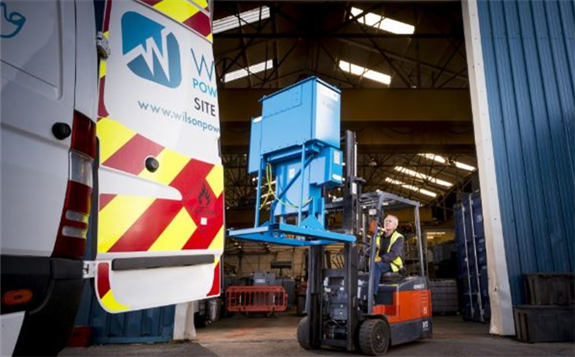
The transformers can reduce core losses by up to 90 per cent, compared to the older ground-mounted distribution transformers they’re replacing.
Network losses are the leakage of power during transportation from generation to consumption. These losses account for approximately 1.5 per cent of the UK’s greenhouse gas emissions, and 25 per cent of that originates from distribution transformers. Reducing them is key to delivering climate commitments and part of Northern Powergrid’s drive to ensure the network is a key enabler of decarbonisation in the UK.
Replacement of older transformers with the new AMTs has the potential to produce an annual losses savings of up to 2 GWh – enough to boil 20 million kettles and equivalent to saving 568 tonnes of carbon dioxide every year.
“For too long, losses have been seen as an unavoidable reality of network operation, but new technology means we can now tackle the problem head on,” commented Aisha Ahmad, smart grid development engineer at Northern Powergrid. “Trials like this will help build our understanding of losses, support decarbonisation and make Northern Powergrid’s network as efficient and reliable as possible.”
The scheme forms part of the company’s wider Losses Discretionary Reward programme, due to be submitted to Ofgem in March 2020. It will also enhance the understanding of technical losses and underpin loss reduction across the company’s network which delivers power to 3.9 million homes and businesses across the North East, Yorkshire and northern Lincolnshire.
Over the next 12 months, Northern Powergrid will carry out sound testing, thermal imaging and power quality testing to monitor the performance of five AMTs, which are being installed at strategically selected sites for the trial. The selected sites are located in Jarrow, Consett and Bishop Auckland, with an additional two sites in Hull.
The learnings from the trial will inform the network operator on whether to include the technology in future transformers’ specifications and how to install the assets from an operational perspective, while building its understanding of the AMTs’ environmental noise impact and power quality factors. The outcomes will be shared as a UK case study for DNOs together with commercial and industrial users.
The core losses of a transformer (also known as a no-load losses), are caused by hysteresis and eddy current losses which are constant and present from the moment of energising the transformer as a result of the alternating magnetic field applied to its core. Because of the design of AMTs and the low core loss properties of the materials used to build them, the core losses are significantly reduced.
Wilson Power Solutions, which is experienced in manufacturing power transformers and is a pioneer of the award-winning low loss AMTs, manufactured the e2 Super Low Loss AMTs.
Ayah Alfawaris, marketing manager at Wilson Power Solutions, said: “We have over 1,000 installations of the Super Low Loss transformers across the UK. They save customers significant amounts of energy and tons of carbon dioxide. Northern Powergrid is the first DNO to install Super Low Loss ground-mounted AMTs. This project acts as a steppingstone to showcase how forward-thinking and investing in the right technology could reduce costs for the customer and ultimately help the UK reach its Net Zero target.”
Freedom Group, now part of NG Baily, is Northern Powergrid’s service provider and will be responsible for delivering the AMT installation work as part of its contracted framework with the DNO. Freedom will help ensure the installation of the five AMTs runs to plan, with the roll out due to be completed in the first quarter of 2020.